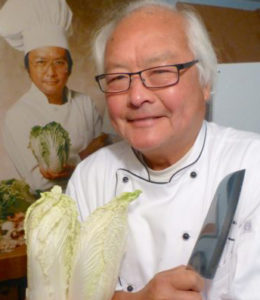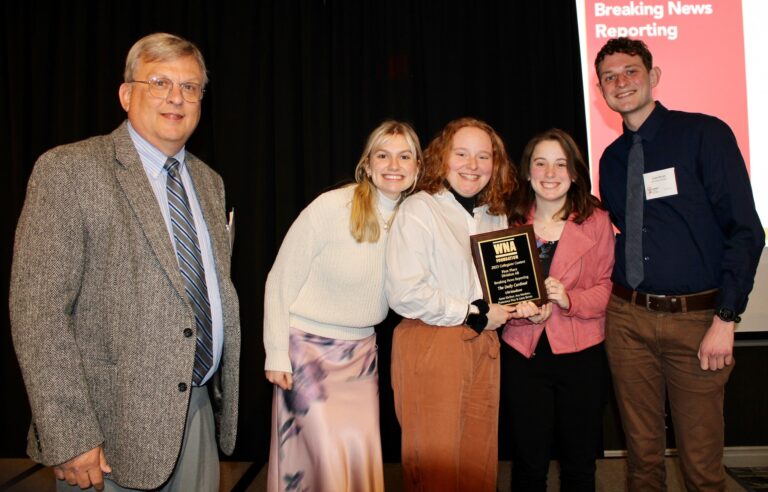Wok & Roll by Peter Kwong, (Frederic) Inter-County Leader
» Download this column as a Word document
A few weeks ago, I was invited to give a lecture to the business class in Spooner High School. The students, mostly juniors and seniors, have to prepare a business plan in how to start a business.
I gladly obliged, as being a business consultant, I have been giving advice to business owners on how to start and operate a business for many years.
It is amazing that I found Spooner on the map. A man known to have no sense of directions, it took me a while to realize that Osceola is south of where we live, and Luck and Frederic are on the north end. Taylor Falls is on the west, and to reach Amery, I have to go east, and then go south on 46.

And Spooner is way, way farther north, 45 minutes north of Turtle Lake. Living in Milwaukee all these years, I was used to traffic jams. And driving more than 15 minutes to reach my destination was considered “long distance.” Now, I can drive 50 miles without seeing a living soul (cattle, yes). And an hour drive is considered fair game.
Ah, so much to adjust to, but I’m loving it.
Anyway, talking to those young students brings back memories. They know just enough about supply and demand; but yet, they clearly understand why McDonald’s is offering a $1 meal just to get you in the door, and then will sock you with a $2 soda or a $3 bag of fries, which cost them 15 to 20 cents.
Smart kids indeed. Can’t help but love them.
So, I wrote six P’s on the board. And asked them what the P’s stand for before they actually open a business. And lo and behold, they got them all. Now, I wish all the business owners I dealt with before would have talked to these kids before they opened their business.
Yes, there is future for our next generation!
So, what are the six P’s? They are Price, Place, People, Product, Promotion and Profit. They named them all, and needless to say, I was speechless. Wow! So let’s talk about each P, and why it is so important.
Price: Golden rule — charge too much, no customer will buy. But don’t charge enough, you work for free. It is a science to be competitive and stay in business at the same time. But as long as you’re being honest and consistent, and serve a good product, folks are willing to pay the price.
Place: Like the old saying, “location, location, location.” Is the business in an area that is visible to traffic, or it is hidden somewhere inside the mall? Is there ample parking? And how about the rent? How many products would you need to serve every day in order to pay rent? Most rents are 3 to 5 percent of sales. The ideal location is away from the crowd with cheaper rent, but customers will find you because you have a unique product.
People: Who are your customers? In the past, I taught students about the demographics and psychographics of guests. Demographics is something that you actually see, like their race. Are they black, white, green, yellow or red? Their age, how old are they? What other features that you can notice? Psychographics is a bit difficult to recognize — their religion, their profession, their status seeking, etc.
Having a BBQ wood pit restaurant serving famous ribs and pork shoulder in a Jewish or Muslim neighborhood spells disaster. We have to spend some time studying our neighbors — who are they? Will they spend money on our products continuously? And then, who are your employees? How are you going to teach and train them so they can become a “mini you”?
Product: Again, what is our niche? Are we serving something that the customers will like? Or serving something that we hope they will like? And what makes our products so different that they will come back and try us over and over? How many pizzerias are there in your town? And why would you go back to the same one over and over again? Despite the price that they charge and their location?
We have to think outside the box and serve something totally unique and different from the competitors. And that’s not just foods we are talking about. How about watches, clothing, shoes, or whatever; what makes your product different?
Promotion: Do you know how much it costs to advertise at the Super Bowl for a 30-second spot? Millions! But big companies are willing to pay because people watch. Whether they will buy is another story, but they watch, and they know the product exists! We can spend zillions of dollars advertising and promoting, but does it work?
A good friend who is a banker once told me that to get a new customer to open a new account with their branch, it costs them between $500 to $1,000 in advertising. Come to think of it, there are billboard ads which cost $1,000 to $2,000 a month depending on location. Newspaper and magazine ads are extremely costly. And TV, ha-ha, unless you’re the auto companies who can spend $100,000 for a 30-second ad.
So, what can you do to bring in more customers? I’ve taught many business owners that to get loyal, returned customers costs them nothing. Yet, they have to be “the host with the most.”
Like most people, I pay my bill with my credit/debit card. What if when the server returned my card, they said, “Thank you, Mr. Kwong, come back and see us soon.” (My name is on the card!) And if the owner called me by name when I was leaving, I would be his friend for life! So, spend thousands and get nothing? Or spend nothing and get thousands?
Profit: Why are we in business? To make a profit. To pay bills and to have a life. We need a P&L (profit and loss statement) to know where we stand so we can make continuous adjustments in order to survive. Why stay in business if we are not making money?
Anyway, hats off to my young Spooner friends. Our future depends on them.
Go to phkwong.com for more columns and to purchase his book, “Wok & Roll.”



